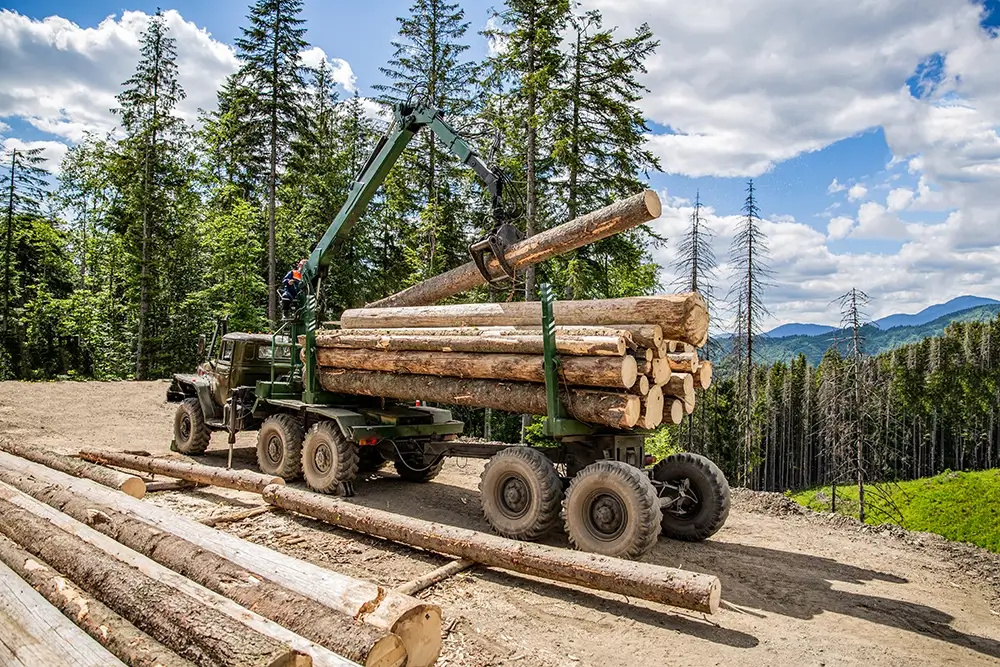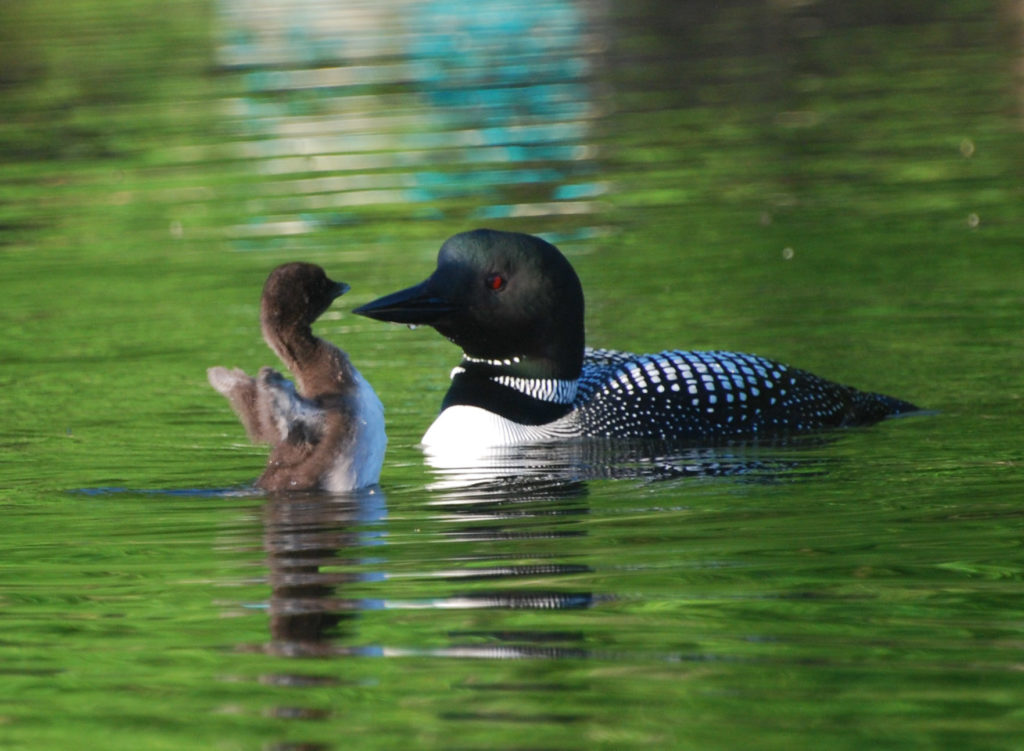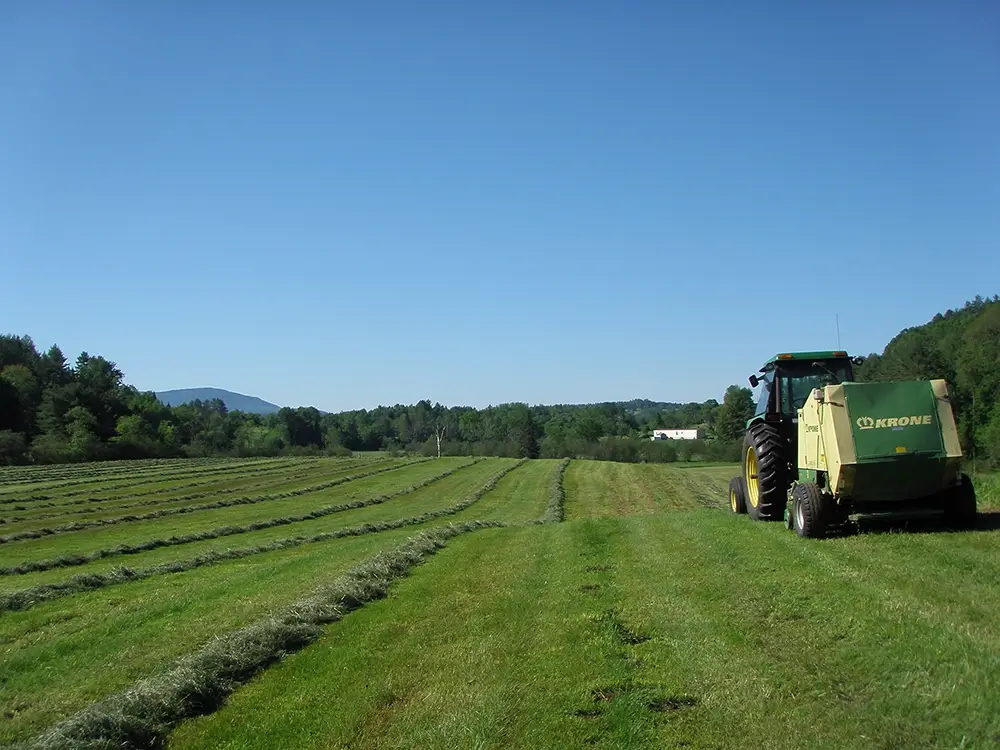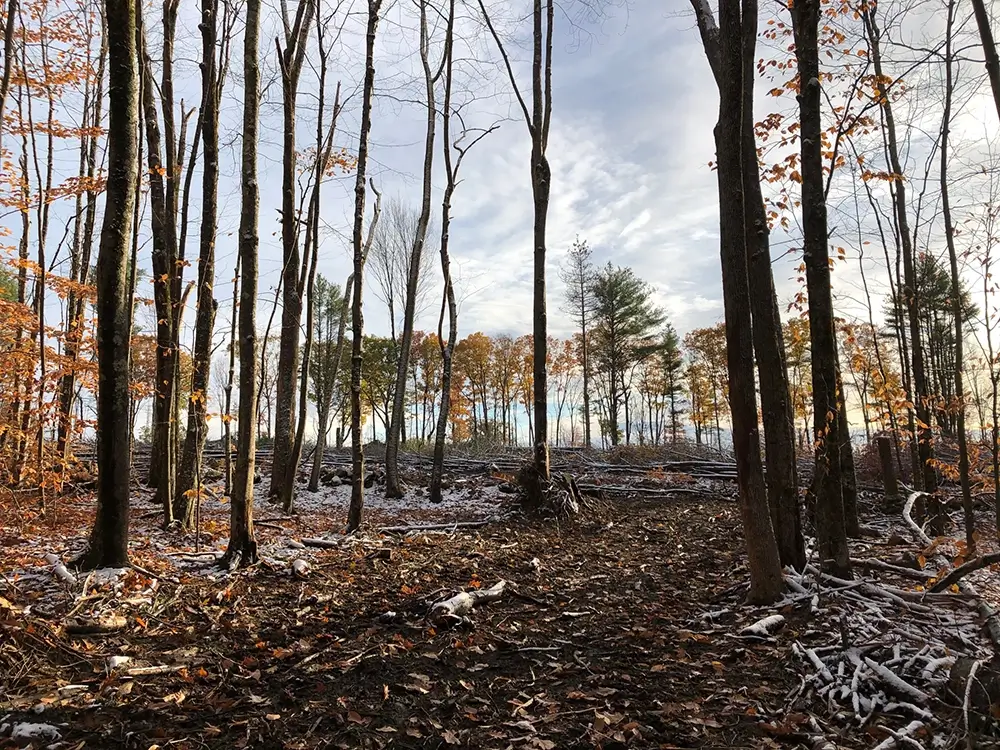Changes to habitat negatively affect more birds than any other threat and can happen in many ways. Most obvious is a net loss when habitat is converted from one type to another, but sometimes conversion happens gradually as a result of management decisions. Habitat degradation is even more subtle, and results from smaller changes that add up in often poorly understood ways to make habitat less suitable. In all cases, as habitat is lost or degraded, birds need to find suitable habitat elsewhere. If they are unsuccessful at doing so, they may fail to breed, experience lower reproductive success, or possibly even die, all of which have implications for long-term population trends.
We tend to think about habitat in the breeding season, when birds need to build nests, find food for their young, and seek shelter from predators. But they need food and shelter during migration and winter as well, and if the habitats that provide these are lost or degraded there is a higher risk of mortality from predation or starvation. Again, if fewer birds survive the non-breeding season there will be fewer to nest the following summer, and populations will decline.


When we clear a forest for a shopping center, drain a wetland for agriculture, or build homes along a pristine lakeshore we are removing habitat from the landscape and replacing it with something that is often far less attractive to native wildlife. The original habitat is potentially gone forever, and with it many of the birds that once lived there. Commercial and residential development is the largest source of habitat loss in New Hampshire, with a low estimate of 3000 acres a year lost in this manner. Even if habitat is not lost entirely, the fringes of suburban development chip away at existing forests, decreasing overall area in more subtle ways (see Habitat Degradation below).
During migration, birds require stopover habitat to rest and feed, and losses to this critical resource can occur all along a species’ migration route. The problem is especially detrimental along coastlines. Coastal plains are often the first or last landfall for migrants making long overwater crossings, and can be an important source of food. New Hampshire’s coastal shrub habitat provides berries and insects in the fall, a combination that allows birds to build up fat quickly to fuel their migration. In the US, and increasingly in Central and South America, development in the coastal plain eliminates this vital stopover habitat, fragmenting forests and degrading or filling in wetlands.
Extensive loss of wintering habitat is most pervasive in Latin America and the Caribbean, where many people still rely on subsistence agriculture and continue to clear forests for this purpose. At the same time, even larger areas of habitat are being converted to commercial agriculture, including cattle farms, aquaculture, coffee plantations, soybean fields, avocado groves, and other uses. Agriculture doesn’t have to be a total loss in terms of habitat, as evidenced by studies of birds in shade vs. sun coffee plantations, and there are increasing efforts to develop more sustainable practices for other commodities such as chocolate and rice. Note also that winter habitat loss is not just a tropical issue. Wetlands and bottomland forest in the southern United States have long been removed or altered for agriculture, effecting species like wintering Rusty Blackbirds. The urban/residential footprint required to support growing human populations is an ongoing issue everywhere.
No matter where it occurs, habitat loss is best prevented by outright land protection, here including careful planning to minimize future losses and maintain connections between protected areas. New Hampshire has an active land conservation community and extensive protected areas such as the White Mountain National Forest, but a growing population requires us to remain vigilant and act proactively.
You might not even recognize degraded habitat as such: a forest might still be full of healthy trees, or a wetland teaming with insects and calling frogs. But if you look closely there might be important changes that make that habitat less suitable for birds. Overly abundant deer can browse away almost all ground and understory vegetation, resulting in park-like forests with much lower bird species diversity. Non-native invasive species can outcompete or kill native ones and change a habitat’s species composition. Climate change has the potential to cause similar changes as different species adapt at different rates. In most cases, we are only just starting to learn how these incremental changes might affect New Hampshire’s birds.

Fragmentation is a particularly insidious form of habitat degradation. When we build roads through large forested areas, or even expand suburban developments around their edges, we might not be removing significant amounts of forest. The habitat that remains, however, is often less suitable to birds. Some species require a minimum area or forest or grassland, and simply don’t settle in small or isolated patches, and sometimes the presence of a man-made edge increases the risks of mortality, disturbance, or invasive species. When habitats are broken into smaller and smaller pieces the effect can be the same as more extensive habitat loss.
As with habitat loss, habitat degradation can affect birds at any point in the annual cycle. Migratory stopover sites can vary greatly in the quality of resources they provide. Something as small as a clump of trees in an urban neighborhood might be attractive to a migrating warbler in desperate need of a place to land, but the best stopover sites tend to be in more intact native habitats. The same applies once a bird has arrived at its winter destination. Birds that occupy less suitable habitats may have a lower chance of surviving the winter. Even if they survive, birds from low-quality winter habitats may be in poor condition and less likely to reproduce successfully when they return north in spring.

Few if any habitats in New Hampshire have not been subject to human activity of some sort. Most of our forests were cleared for agriculture by the 1800s, and the rest harvested multiple times for timber or other wood products. The majority of lakes and ponds have a dam of some sort, as do significant sections of many rivers and streams. While dams rarely have direct impacts on birds like they do on fish, altered water flows can still cause habitat changes which might make conditions better or worse for wetland and aquatic species.
Most people are familiar with forest management, which can vary from a clear cut to selective harvesting of a small number of trees. As one might expect, different types of management have different effects on bird populations. Clear cuts are now relatively uncommon and rarely very large, and quickly grow into shrublands where they support a different suite of species. In some cases, the forest that regenerates is a different type than was removed, which can alter overall habitat availability for more specialist species such as those that need spruce-fir forest.
Similarly, not managing a habitat can have implications for the wildlife that live there. Grasslands were a rare feature on the New Hampshire Landscape prior to European colonization, and if not maintained will rapidly revert to forest. The same is true for shrublands and pine barrens, which periodically need to be cut or burned to prevent invasion by trees. For anthropogenic habitats like grasslands and many shrublands, loss happens naturally, and if we want them – and the birds that use them – to persist on the landscape we need to actively keep them clear of trees. Such forest maturation is one of the leading factors behind declines in birds of these habitats. Pine barrens are a special case. This habitat is adapted to periodic fire, which serves the same purpose of removing invading hardwood trees. By suppressing fire, humans have increased the rate at which pine barrens are replaced by other types of forest.
While grasslands require periodic mowing to maintain habitat, that same mowing is also a threat to grassland birds. These species nest on the ground, and mowing during the breeding season can destroy nests outright or make them more visible to predators. Grassland bird conservation is thus a delicate balance between the needs of birds and the needs of farmers, with economic factors playing an important role.
Contact Headquarters

National Wildlife Federation Affiliate
Website By CleverLight
Information for the species profiles on this website was compiled from a combination of the sources listed below.
The Birds of New Hampshire. By Allan R. Keith and Robert B. Fox. 2013. Memoirs of the Nuttall Ornithological club No. 19.
Atlas of the Breeding Birds of New Hampshire. Carol R. Foss, ed. 1994. Arcadia Publishing Company and Audubon Society of New Hampshire
Birds of the World. Various authors and dates. Cornell Laboratory of Ornithology.
Data from the Breeding Bird Survey
Data from the Christmas Bird Count